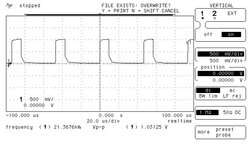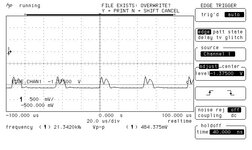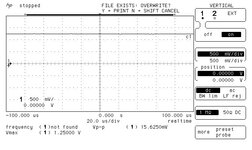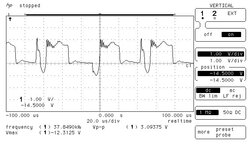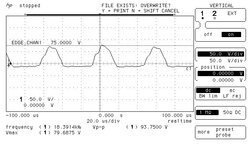neazoi
Advanced Member level 6
Hi I am fixing a Vectrex game console and I see the CRT filament is not glowing. I disconnected the CRT and fed power to the filaments from an external PSU and they do glow, so the CRT works. I traced back the problem and measured the output of the 555 (page 32 on the manual). The output image is attached.
Then I measured the base and collector signals of the BU407 and they do not seem right.
I measured T501 primary and secondary with an ohms meter:
primary=4.4 ohms
Secondary=0.8 ohms
However when I connect the multimeter to one pin of the the primary and one of the secondary I get zero ohms.
I measure it in circuit.
What does it mean, is the transformer bad or is it shorted through some other path?
However I can still measure resistances in the pri/sec alone, so this does not make sense
Then I measured the base and collector signals of the BU407 and they do not seem right.
I measured T501 primary and secondary with an ohms meter:
primary=4.4 ohms
Secondary=0.8 ohms
However when I connect the multimeter to one pin of the the primary and one of the secondary I get zero ohms.
I measure it in circuit.
What does it mean, is the transformer bad or is it shorted through some other path?
However I can still measure resistances in the pri/sec alone, so this does not make sense
